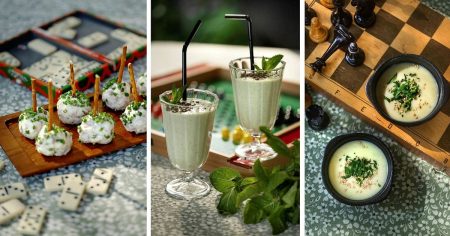The quest to define the taste of Sweden culminates annually in the selection of the National Pastry of the Year (”Årets nationalbakelse”). This competition, a vibrant display of culinary creativity and national identity, challenges pastry chefs across the nation to capture the essence of Swedish flavors in a single, delectable creation. It is a journey of innovation and tradition, where established techniques meet modern interpretations, all striving to represent the diverse palate of a nation. The selection process is a rigorous examination of taste, texture, and aesthetic appeal, a reflection of the high standards of Swedish baking. But beyond the technicalities, the competition seeks a pastry that resonates with the Swedish soul, a bite that evokes a sense of home, heritage, and shared culinary experience.
The competition attracts a diverse array of entries, each pastry chef bringing their unique perspective and skill to the table. Some draw inspiration from classic Swedish desserts, reimagining traditional flavors and textures with a contemporary twist. Others venture into uncharted territory, experimenting with novel ingredients and techniques to create entirely new flavor profiles. The diversity reflects the evolution of Swedish cuisine, a blend of time-honored recipes passed down through generations and the innovative spirit of modern gastronomy. The entries often utilize seasonal ingredients, showcasing the bounty of Swedish nature and reflecting a deep connection to the land. From the vibrant berries of summer to the earthy spices of autumn, the pastries become a microcosm of the Swedish landscape, capturing the essence of each season.
The judging process is a meticulous undertaking, a testament to the seriousness of the competition. A panel of expert pastry chefs and food critics scrutinizes each entry, evaluating not only its taste and texture but also its presentation and overall concept. They look for balance, harmony, and a clear expression of Swedish culinary identity. The judges consider the technical proficiency of the baker, the quality of the ingredients used, and the originality of the creation. They debate the merits of each contender, weighing tradition against innovation, familiarity against surprise. The deliberations are intense, reflecting the passion and dedication that underpin the Swedish baking tradition.
Beyond the competition itself, the search for the National Pastry of the Year sparks a broader conversation about Swedish culinary identity. What does it mean to taste like Sweden? Is it the comforting familiarity of cinnamon buns and cardamom-spiced breads? Or is it the tartness of lingonberries and the richness of cloudberries, reflecting the country’s wild and natural beauty? The competition encourages reflection on the evolving nature of Swedish cuisine, acknowledging the influence of global culinary trends while celebrating the enduring appeal of traditional flavors. It prompts a dialogue about the role of food in shaping cultural identity and the power of a shared culinary experience to foster a sense of community.
The winning pastry, ultimately, becomes more than just a dessert; it becomes a symbol of national pride. It represents the culmination of a collective effort to define and celebrate the essence of Swedish flavor. The chosen creation is featured in bakeries and cafes across the country, allowing people from all walks of life to share in the experience. It becomes a topic of conversation, a source of national unity, and a testament to the enduring power of food to connect people. The National Pastry of the Year serves as a reminder of the rich culinary heritage of Sweden, while simultaneously looking towards the future of its evolving gastronomic landscape.
The competition, therefore, is not merely about finding the best-tasting pastry. It’s about exploring the multifaceted nature of Swedish culinary identity, fostering innovation and creativity within the baking community, and ultimately, celebrating the shared experience of taste and tradition. It’s a journey of discovery, a testament to the power of food to connect us to our heritage, our land, and each other. It is a delicious and engaging way to ask and answer the question: ”Hur smakar Sverige?” – What does Sweden taste like? The answer, of course, lies not just in a single pastry, but in the collective culinary narrative it represents.














